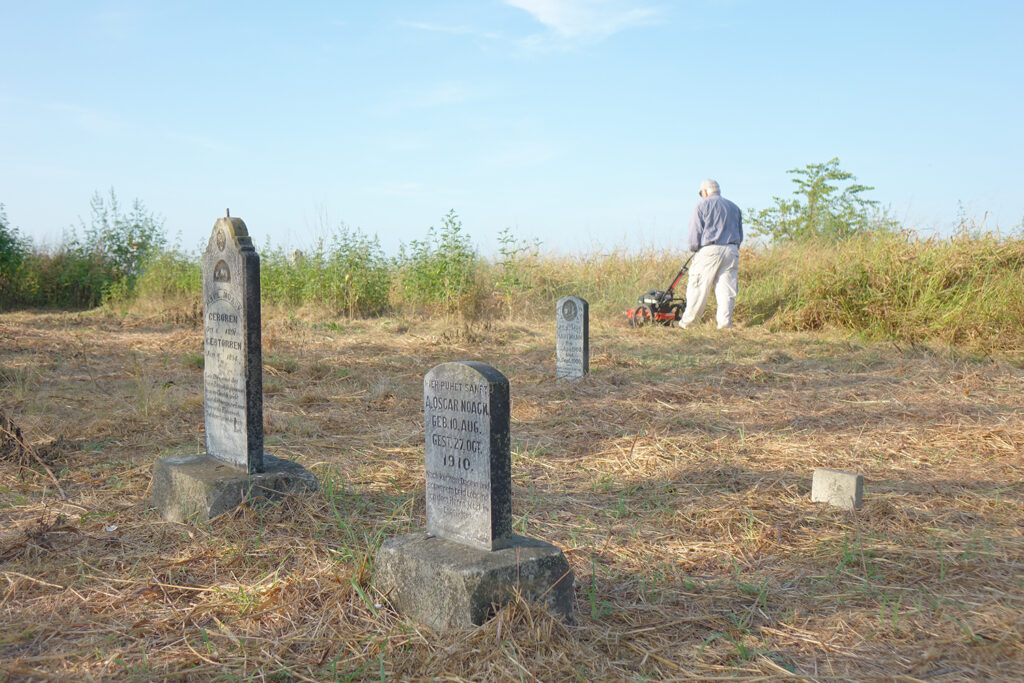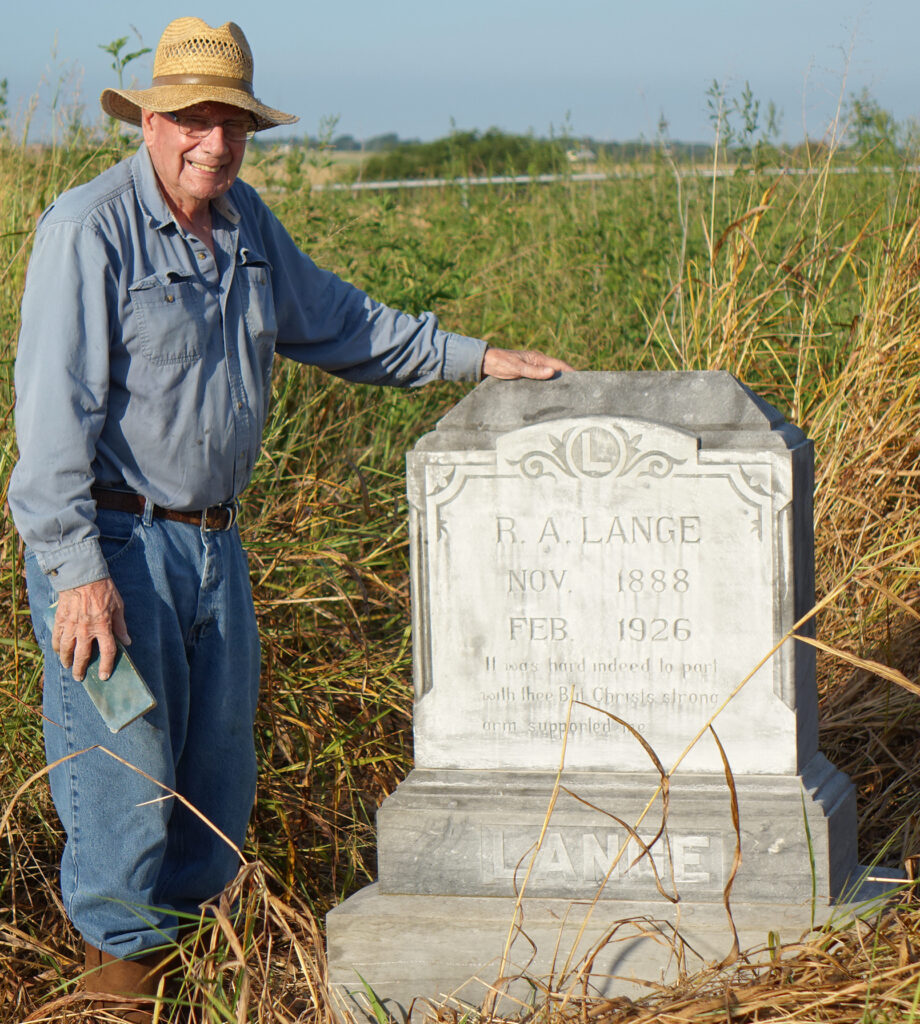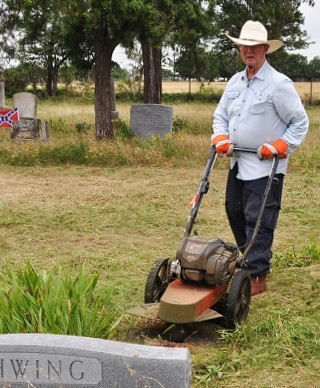Not everyone finds cemeteries depressing or spooky. Williamson County is home to a group of taphophiles who have made it their mission to repair and preserve the pieces of Texas history that our historic cemeteries represent.

There are groups like this in many places across the country—taking care of burial plots along the road, in backyards, or connected to old churches that are no longer maintained, with relatives having moved on long ago.
Cemeteries are part of our collective history, and their gravestones tell stories of people who once lived, worked, and built our towns, memorialized by a few sentences in stone. The Williamson County Cemetery Restoration Volunteers have taken it upon themselves to identify and rehabilitate some of these old, abandoned cemeteries scattered among the rural areas of our county.
In heat or cold, and with their personal equipment; jumbo-sized weed-whackers, mowers, and a lot of hard work, these dedicated men and women work nearly every weekend re-discovering and documenting founding families, pioneers and ancestors in the undergrowth of private and public lands.
Thanks to John Christeson, who more than a decade ago set out to organize all the available information about cemeteries in our county, nearly 250 have been added to and documented on FindAGrave.com.

Armed with a camera, a GPS and computer access to the online data bank of FindAGrave, he began the arduous task of documenting thousands of graves. After completing the relatively easy survey of the large, well-maintained cemeteries in the county, he turned his efforts to attempting to find the often forgotten or “lost” cemeteries in rural areas of the county.
Working mostly alone, Christeson visited cafés where farmers would meet for coffee and conversation. After explaining his objective, the locals often led him to otherwise undocumented burial sites. Sometimes he would have to cut a path through the brush or even crawl on the ground to read inscriptions on the tombstones.
But John was not yet finished. After the search and identification phase was completed, he began a program of clearing and cleaning as many of the abandoned cemeteries as possible. These days he is helped by friends, Boy Scouts or other volunteer organizations; cutting weeds, trimming trees or repairing fences and straightening head stones. His passion, in his own words; “To preserve the history of the early settlers by maintaining their abandoned cemeteries.”
THE RESTORATION TEAM
The Cemetery Restoration Volunteers are actually two teams with distinct interests and jobs. One team works every week cutting weeds and other chores while the other repairs and levels the headstones. Team leader Don Stephens says, “While we have never officially named the teams, we call them ‘weed killers’ (or weeders / weedies) and the other team is called ‘stone setters’ (or stoners / stonees).”
Gallery Photos courtesy of Wayne Ware
Cemetery history
Don and his team have a unique perspective on the history of the county as well as some small towns that, today, are little more than a crossroad or a mention on a map. Many are named for the first family or postmaster to settle there, and it is apparent by the multitudes of stones with the same names in the local plots.
Don says, “One thing I have begun to recognize from this work is just how hard life was on the Frontier. People here lived in relative isolation with their families. There wasn’t a grocery store, you had to dig your own wells, there were Native Americans who still had claims to living on the land, and there might have been one doctor and a sheriff within a day’s ride.”
As we walked through the Noack Cemetery, the names and dates on the headstones demonstrated his point very poignantly. Many were for the Zieschang family and nearly all were written in German. The Zieschang cemetery was brought to the county’s attention by a concerned descendant of the family pioneers.
All but one of the headstones noted a life lived fewer than five years or 80 or more. Don explained, “It was a hard life and many children were lost in infancy because they weren’t strong. But if you were strong enough to make it out of childhood, you were hardy stock, and destined for a very long life after. Anything in between was likely an accident or serious illness.” To illustrate, he pointed out the number of graves in the latter part of the 1910s when the Spanish flu was epidemic.
He adds that this kind of “forensic” observation is common, and quite interesting to the group when they work on a new site. The volunteers welcome requests and notifications about new locations to perhaps put them on their schedule of maintenance.
They also welcome anyone who wishes to volunteer to help with the “yard work” of this labor of love.
Contact Don Stephenson via the Williamson County Historical Society (wilcohistory.org).







